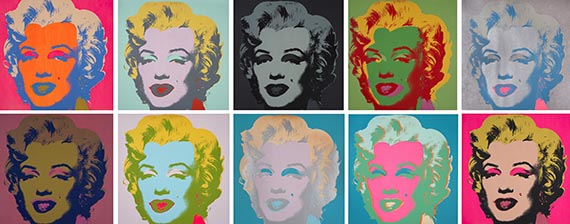Dictionary


Collotype
Collotype is a plangraphic, photo-mechanical, non-screen printing process that makes possible the faithful reproduction of half-tones and fine tonal gradations. Collotype was first used to produce printing plates by A. L. Poitevin in 1855. To make the plates for printing, a matt etched mirror-glass plate about 10 cm thick - similar to that used in screen printing - is coated with a light-sensitive emulsion (chromate gelatine), which makes it sensitive to light. The plate is exposed beneath a negative; the amount of light admitted in exposure determines the extent to which the emulsion is case-hardened (less light means less case-hardening). When the plate dries, a fine, puckered grain is left. The individual grains of this layer swell in water to varying degrees, matching the extent to which they repel the waxy collotype inks. Thus contrast can be increased in collotypes by moistening the emulsion (moistening to a greater extent lessens contrast whereas moistening to a lesser degree enhances it). Hence the necessity of uniform humidity for ensuring consistent results in collotype printing. Collotype is only suitable for small editions. It is the printing process that achieves the finest results in reproducing paintings.
Collotype is a plangraphic, photo-mechanical, non-screen printing process that makes possible the faithful reproduction of half-tones and fine tonal gradations. Collotype was first used to produce printing plates by A. L. Poitevin in 1855. To make the plates for printing, a matt etched mirror-glass plate about 10 cm thick - similar to that used in screen printing - is coated with a light-sensitive emulsion (chromate gelatine), which makes it sensitive to light. The plate is exposed beneath a negative; the amount of light admitted in exposure determines the extent to which the emulsion is case-hardened (less light means less case-hardening). When the plate dries, a fine, puckered grain is left. The individual grains of this layer swell in water to varying degrees, matching the extent to which they repel the waxy collotype inks. Thus contrast can be increased in collotypes by moistening the emulsion (moistening to a greater extent lessens contrast whereas moistening to a lesser degree enhances it). Hence the necessity of uniform humidity for ensuring consistent results in collotype printing. Collotype is only suitable for small editions. It is the printing process that achieves the finest results in reproducing paintings.
Offers
Headquarters
Joseph-Wild-Str. 18
81829 Munich
Phone: +49 89 55 244-0
Fax: +49 89 55 244-177
info@kettererkunst.de
Louisa von Saucken / Undine Schleifer
Holstenwall 5
20355 Hamburg
Phone: +49 40 37 49 61-0
Fax: +49 40 37 49 61-66
infohamburg@kettererkunst.de
Dr. Simone Wiechers / Nane Schlage
Fasanenstr. 70
10719 Berlin
Phone: +49 30 88 67 53-63
Fax: +49 30 88 67 56-43
infoberlin@kettererkunst.de
Cordula Lichtenberg
Gertrudenstraße 24-28
50667 Cologne
Phone: +49 221 510 908-15
infokoeln@kettererkunst.de
Hessen
Rhineland-Palatinate
Miriam Heß
Phone: +49 62 21 58 80-038
Fax: +49 62 21 58 80-595
infoheidelberg@kettererkunst.de
We will inform you in time.




